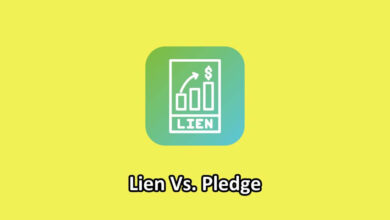Farming is one of the oldest professions in human history. Since the dawn of civilization, people have been growing crops and raising animals to meet their basic needs. Over the years, farming practices have evolved and transformed. Two of the most prevalent farming practices today are intensive and extensive farming. And, in this article, we will have a look at different concepts, examples, and tables that compare both intensive vs extensive farming.
Intensive Vs Extensive Farming (Comparison Table)
| Intensive Farming | Extensive Farming |
|---|---|
| Intensive Farming refers to a modern method of agriculture that uses small land areas to produce large amounts of crops or livestock using advanced technology, chemical fertilizers, and high-yield crops. | Extensive farming refers to a traditional method of agriculture that uses large land areas to produce low yields of crops or livestock using traditional farming methods, natural fertilizers, and low-yield crops |
| Intensive farming uses small land areas. | Extensive farming uses large land areas. |
| It requires a high level of labor and capital. | It requires and uses a low level of labor and capital Investment. |
| Intensive farming holds small and expensive agriculture systems within a highly populated area. | It holds a large and inexpensive farming system within a moderately populated area. |
| In the case of intensive farming, the output or crop yield obtained per hectare is high. | In the case of extensive farming, the crops yield per hectare is comparatively lesser. |
| Their lands are located near the market. | Extensive farming lands are remotely located. |
| In the case of intensive farming, animals are often confined in small spaces, which can lead to stress and disease | In the case of extensive farming, animals are free to graze and roam, which promotes their natural behavior and welfare |
Intensive Farming
Intensive farming, also known as factory farming, is a modern method of agriculture that involves producing large amounts of crops or livestock in a relatively small area of land. The primary aim of intensive farming is to increase productivity and profitability by using advanced technology, high-yield crops, and chemical fertilizers. Intensive farming typically involves the use of machinery, such as tractors, combine harvesters, and irrigation systems, to automate and streamline the farming process. It also involves the use of high-yield crops that have been genetically modified to produce higher yields and resist pests and diseases.
In addition, intensive farming often involves the use of chemical fertilizers, pesticides, and herbicides to promote plant growth and control pests and diseases. These chemicals can have negative impacts on the environment, including soil degradation and water pollution. Moreover, the use of antibiotics in intensive farming can lead to the emergence of antibiotic-resistant bacteria, posing a significant threat to human health.
Intensive farming is typically practiced in areas with a high population density, where land is scarce and expensive. The practice is also common in developed countries, where there is a high demand for cheap and abundant food.
Extensive Farming
Extensive farming, on the other hand, is a traditional method of agriculture that involves the use of large areas of land to produce relatively low yields of crops or livestock. The primary aim of extensive farming is to maintain the natural balance of the environment and preserve biodiversity. Extensive farming typically involves the use of traditional farming methods, such as crop rotation, manual labor, and natural fertilizers, such as animal manure. It also involves the use of low-yield crops that are adapted to the local environment and climate.
In addition, extensive farming often involves the use of pasture lands, where livestock can graze freely, and the use of natural habitats to promote biodiversity. This practice is beneficial for the environment, as it helps to reduce soil erosion, increase water retention, and preserve wildlife habitats.
Extensive farming is typically practiced in areas with low population density, where land is abundant and cheap. The practice is also common in developing countries, where there is a high demand for sustainable and environmentally friendly agriculture.
key Differences Between Intensive and Extensive Farming
- Size of Farming Area: The primary difference between intensive and extensive farming is the size of the farming area. Intensive farming involves the use of small areas of land to produce large amounts of crops or livestock. On the other hand, extensive farming involves the use of large areas of land to produce relatively low yields of crops or livestock.
- Production Methods: Intensive farming relies heavily on advanced technology, chemical fertilizers, pesticides, and high-yield crops to increase productivity and profitability. Extensive farming, on the other hand, relies on traditional farming methods, natural fertilizers, and low-yield crops to maintain the natural balance of the environment and preserve biodiversity.
- Cost of Production: Intensive farming is generally more expensive than extensive farming, as it requires high-tech equipment, chemical inputs, and high-yield crops. Extensive farming, on the other hand, is less expensive, as it relies on traditional farming methods, natural fertilizers, and low-yield crops, which are adapted to the local environment and climate.
- Health Impacts: Intensive farming can have negative impacts on human health, as it involves the use of antibiotics, hormones, and other chemicals in livestock production. These chemicals can enter the food chain and pose a threat to human health. Extensive farming, on the other hand, is generally considered to be healthier, as it involves the use of natural methods and organic farming practices.
- Animal Welfare: Intensive farming practices often involve the confinement of animals in small spaces, which can lead to stress and disease. Extensive farming, on the other hand, allows animals to graze and roam freely, which promotes their natural behavior and welfare.
The following table compares both intensive vs extensive farming in a sequential manner.

You Can Also Read:
Conclusion
In summary, the difference between intensive and extensive farming lies in their size, production methods, impact on the environment, cost, health impacts, and animal welfare. It is essential to weigh these factors and consider the long-term implications of our farming practices for the environment and society. While intensive farming focuses on productivity and profitability, extensive farming focuses on sustainability and environmental preservation.
Also, both farming practices have their advantages and disadvantages, and their suitability depends on various factors, such as the availability of land, climate, and local traditions. As consumers, we can play a role in promoting sustainable and ethical farming practices by choosing products that are produced using environmentally friendly and socially responsible methods.




2 Comments